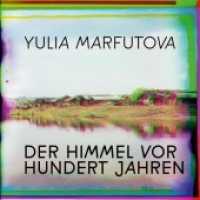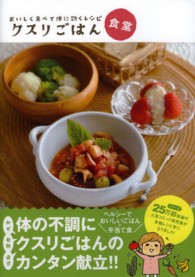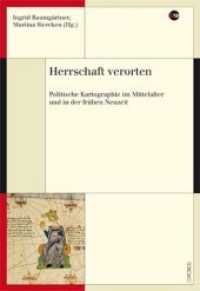- ホーム
- > 洋書
- > ドイツ書
- > Mathematics, Sciences & Technology
- > Earth Science
- > geology
Description
(Text)
The oil shale of the Middle Eocene Messel Formation as exposed in the Messel Pit near Darmstadt, Hessen, Germany, is a famous and widely known source for extremely well preserved fossils documenting a wealth of terrestrial biota. For this reason the Messel Pit Fossil Site was awarded the status of a UNESCO World Heritage Site documenting the ecosystem on the European mainland which existed under a paratropical climate during Paleogene greenhouse conditions. A survey of the extensive fruit and seed collections from the Middle Eocene oil shale of the Messel Formation now reveals at least 140 genera, representing more than 34 families of seed plants. The flora includes occasional conifer and numerous angiosperm remains. There are 34 extant angiosperm families represented of which ten are new records for Messel, plus 65 morphotypes of unknown familial affinity. Three extant genera are recorded for the first time from the Paleogene. The assemblage indicates a wide range of dispersal strategies including pods, capsules, explosive dehiscence, a single arillate seed, two seed-types with dispersal hairs and most modern categories of winged disseminules. In terms of mammalian frugivory the flora contains examples of all potential dietary categories. Tough and hard materials are abundant and soft material is common. Gut contents preserved in many birds and mammals prove that fruits and seeds played an integral part in vertebrate diets and borings in one seed type indicate seed predation by weevils. Previous quantitative studies suggesting an equable warm and humid palaeoclimate with some seasonality for Messel are supported by the newly recognised taxa. Judging from the habit of related living taxa, the vegetation appears to have been a multilevel canopy forest, including a high proportion of lianas in addition to shrubby to arborescent taxa. Herbaceous components are also present but relatively underrepresented. Among other large and well-studied Eocene macrofloras, the Messel assemblage shows overlap with the genera known from the London Clay flora of England and the Clarno Nut Beds Flora of Oregon, but relatively little similarity with floras known from eastern Asia. Compared with extant floras, the Messel flora includes a temperate component with mostly Asian endemics, and some genera that are now disjunctly distributed in the Northern Hemisphere. A large tropical-paratropical component includes genera now confined to the Old World tropics, particularly southeastern Asia and Malaysia, but there are also a few exclusively Neotropical elements. Altogether, the Messel flora can be regarded as one of the most diverse Paleogene floras worldwide.







